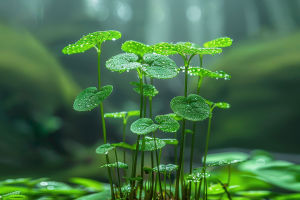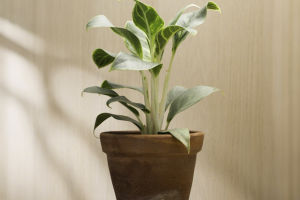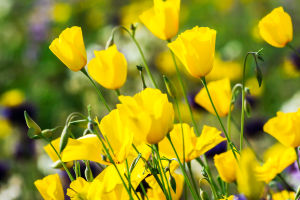
Humidity plays a significant role in plant health and growth, acting as a crucial environmental factor for many species.
Plants require an ideal balance of moisture in the air to thrive, and maintaining the right humidity level can prevent various growth-related issues.
Below is an exploration of how plants interact with humidity and the impact it has on their overall development!
1. Understanding Plant Humidity Needs
Different plants have varying humidity requirements, which are often dictated by their native environments. Tropical plants like ferns, orchids, and monstera thrive in high humidity, typically between 60% and 80%. On the other hand, desert plants, such as cacti and succulents, require much lower humidity, around 30% to 40%. Recognizing these needs ensures that the plants receive the optimal environment for healthy growth.
2. Humidity and Transpiration
Transpiration is the process by which plants release water vapor through their leaves. When the humidity in the air is low, plants experience higher transpiration rates, leading to more water loss. This can cause dehydration and stress, especially for plants that are adapted to more humid environments. Conversely, when humidity levels are too high, transpiration can slow down, potentially leading to problems such as mold or mildew growth.
3. Impact on Plant Diseases
Excessive humidity creates the perfect environment for certain plant diseases to develop. Fungal infections, like powdery mildew and root rot, are common when moisture levels are too high. These diseases thrive in warm, damp conditions and can severely damage plants if not managed. On the other hand, too little humidity can result in dry, brittle leaves and a weakened plant structure, making it more vulnerable to pests and diseases.
4. Controlling Humidity Indoors
For indoor plants, maintaining consistent humidity levels can be challenging, especially in climates with dry winters. One effective way to manage humidity is by using humidifiers to increase moisture in the air. Another option is grouping plants together, as the moisture they release through transpiration will raise humidity in the immediate vicinity. Regular misting can also help, though it’s important to avoid over-wetting the leaves, which could lead to fungal growth.
5. Humidity and Root Health
Humidity impacts not only the leaves and stems but also the roots. In low humidity, plants may struggle to take up water through their roots, as the soil may dry out more quickly. Consistent moisture levels around the root zone are crucial to ensure plants absorb adequate nutrients and water. In areas with high humidity, however, it’s essential to ensure proper drainage to prevent waterlogging, which could lead to root rot.
6. Adapting to Changing Humidity
Many plants have developed unique adaptations to cope with fluctuating humidity levels. Some plants, like the spider plant, are resilient and can adjust to both dry and humid conditions. Others, like the peace lily, can adapt their transpiration rates to help them survive in varying environments. Understanding how a plant naturally reacts to changes in humidity can help gardeners better care for them during seasonal transitions or environmental shifts.
Dear Lykkers! Humidity is a vital factor in plant growth and health. The ideal humidity level for plants depends on their species and natural habitat. Maintaining the right balance of moisture is key to avoiding issues like dehydration, diseases, and poor growth. By understanding and managing humidity, whether through indoor adjustments or by selecting the right plants for your environment, gardeners can create a thriving, healthy garden.
Humidity for Houseplants Explained With Science. Why Grow Lights Will Never Give You Rapid Growth.
Video by Gardening In Canada


